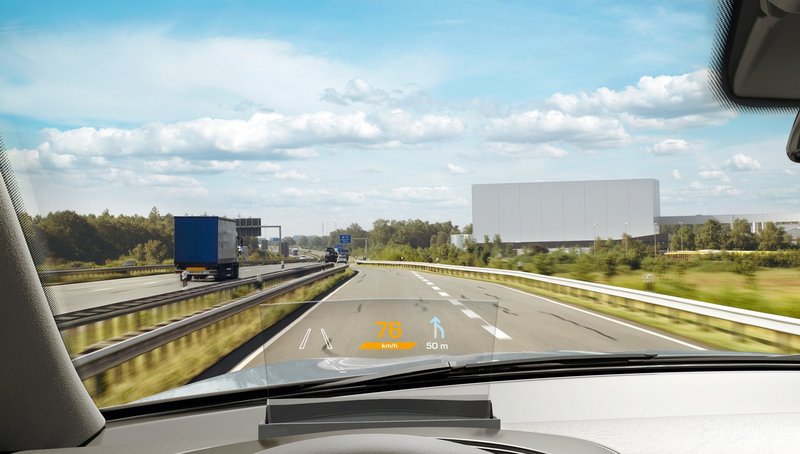Continental Presents Combiner Head-up Display
- HMI innovation for limited installation space and easy integration in whole vehicle families
- Continental is offering a full range of scalable HUD solutions together with the AR-HUD and the windshield HUD
- Combiner HUD development benefits from over a decade of experience in HUD series production
Babenhausen/Germany, July 22, 2014. International automotive supplier Continental is systematically continuing to extend its range of scalable solutions for head-up displays (HUD) for the human machine interface (HMI) in cars. The company has developed a particularly compact example of the HUD principle with the combiner HUD now being launched. It is closely related to the windshield HUD, but requires less installation space. In the combiner HUD, a small, transparent plastic disc called the "combiner" is used as a mirror for the information shown, instead of the windshield itself.
"It is important to us that the ergonomic advantages of HUD technology can have the broadest possible use within the vehicle. With the combiner HUD, we are offering a system that can be easily integrated into whole vehicle families, as well as in particularly sporty cars with limited space in the cockpit," said Helmut Matschi, a member of the Executive Board at Continental and head of the Interior division.
Compared with the windshield HUD, which Continental has produced in series as a color system since 2003, the combiner HUD requires only slightly more than half the installation space, depending on the application. This is possible because the windshield does not need to be integrated in the optical path. Instead, this path is positioned in the combiner, which is optimized for its visual properties. Under favorable conditions, a combiner HUD can be just one single mirror in the interior. This allows the technology to not only be compact but also extremely flat, which makes it easier to integrate in smaller or sporty vehicles.
As the "little brother" of the windshield HUD, it provides almost the same ergonomic advantages. "The combiner head-up display rounds off our HUD portfolio perfectly. While reading select information, drivers can constantly keep their eyes on the traffic. They no longer have to look back and forth between the road and their display instrument," said Eelco Spoelder, head of the Continental Instrumentation & Driver HMI business unit. "Vehicle manufacturers can equip different vehicle models with a single technical basis."
Increased safety for the driver
Even in the combiner HUD, the full-color instrument display projects over the end of the engine hood, just below the driver's viewing angle. The optical path of the combiner HUD is marginally shorter than the windshield application, so the driver's eyes have to adjust slightly more to the shorter distance – but this is more than offset by the increase in safety.
"The more vehicles are equipped with a HUD, the less drivers have to look away from the road. The combiner HUD is an equally important member of our product family," said Spoelder. "Each HUD can reduce potentially dangerous periods of "flying blind" when a driver looks down to their instruments or operating elements."
Since the combiner HUD is suitable for compact vehicle models, it is helping to bring this new technology to a wider range of drivers. While the windshield HUD can now be found as an equipment option in the upper mid-size class vehicles, the combiner HUD is also available for smaller volume models.
It is no coincidence that the development of a particularly compact solution was not the start of the HUD range at Continental. "The design and production experience from two generations of windshield HUD was invaluable for the combiner HUD, with its high level of functional integration, compact design, and its few components," said Pablo Richter, a HUD technology expert in the Continental Interior division. Continental is planning the first production run of the combiner HUD for 2015.
